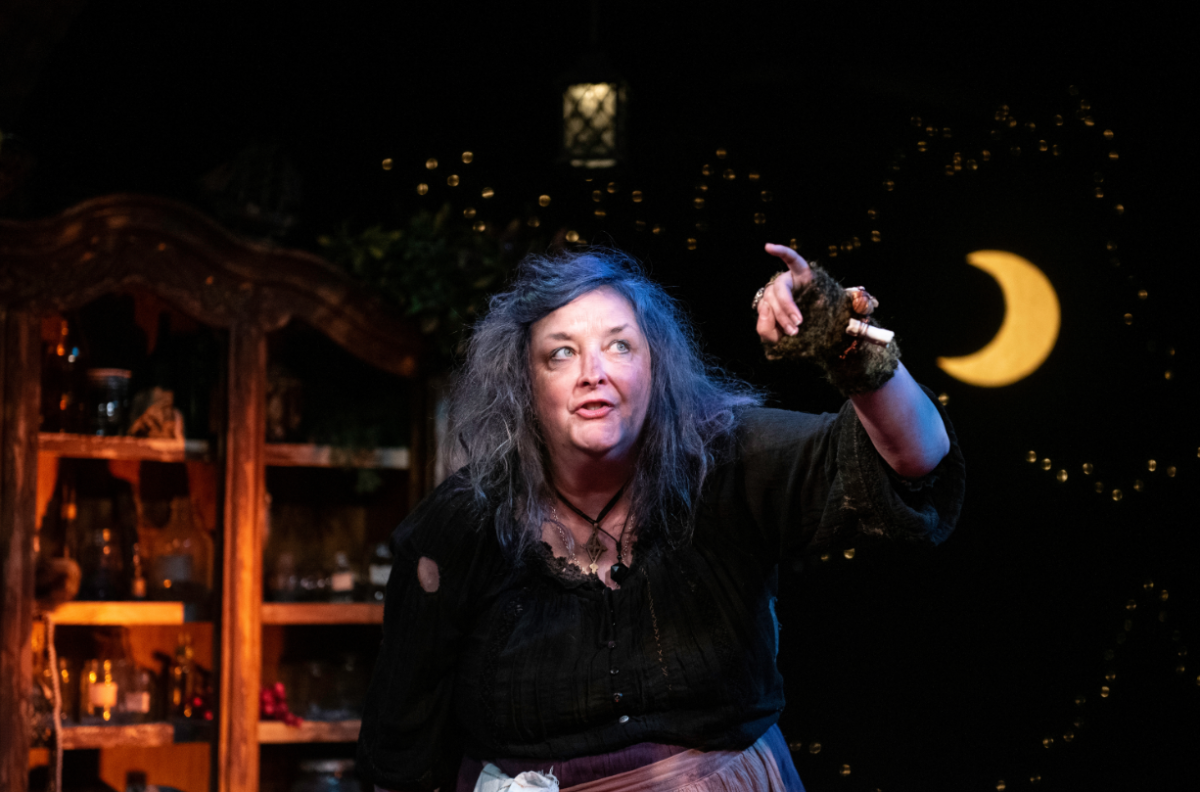The Mexican Revolution began in 1910 in the state of Chihuahua as peasants reacted to elevated food prices and exploitation by affluent landowners. Revolutionaries elected Pancho Villa as their First Commander, a man with a ruthless temper, a determination for victory and a reputation as a swift gunfighter. Above all, he was loyal to his men and his mission.
Produced by Trece Lunas Arts Collective, Emiliano Silva’s play “Que Vivan Los Muertos!” (Long Live the Dead!) tells an invented story of Pancho Villa’s fictional son Francisco Villa (played by Jacob Al Jaffery). A burdened union leader in a Mexican border town, he contests the corrupt local government which profits from the exploitation of workers by foreign companies with a desire for cheap labor.
From the play’s onset, this message of oppression and avarice is told and retold from multiple perspectives. With Mexican rancheras (folk songs), the play looks to the past to empathetically tell the stories of oppressed peoples, criticizing the injustice done to them. Combining this tradition with physical humor, live music and dramatic imagery, “Que Vivan Los Muertos!” reveals the complexities of its subject in the method Trece Lunas Arts Collective refers to as “circus-theatre-ranchera”.
The production begins with a gutted television set – several actors take turns popping their heads into it from below, spoofing American television news and commercials. In a satirical thrash at U.S. Army commercials, they instruct the viewer to be all that you can be and call, 1-800-GENOCIDE. They mock the ubiquitous American drug commercial in an advertisement for Greedexo, a greed-inducing medication. Side effects include kicking your dog and the possibility of never being able to do “it” again.
This opening sequence brashly sets the tone for the remainder of the show. Another layer of insight is introduced, moving toward Villa’s story. Villa’s struggles are told through a ringmaster who enters the stage cracking his whip at several spitting, snarling, clawing brutes. Donning unkempt wigs and open, ragged vests revealing hairy chests, these men bare their wild eyes and aggression, signifying their savagery. Perhaps these beasts represent the impoverished worker – a grand exaggeration of how they’re perceived by their exploiters. It becomes obvious these beasts are dead and the ringmaster promises to bring them back to life with a magical elixir. At this prompt, the Pachamama Band bursts into an energetic Latin folk number and the dead begin to dance and sing “caliente, caliente, ha” and abandoning their beastly mannerisms. Now, Villa’s tale is ready to be told.
Jailed by the corrupt police for his radical politics, Villa escapes and retreats to the home of Pancho Villa’s ex-lover – aged soldada (female soldier), Dona Lupe, played exuberantly by Nestor Amarilla. To obscure Villa’s presence, Lupe and her goddaughter Rosita, played by Melanie Martin, dress Villa as a young woman. He spends much of the rest of the play in a long, flowery dress and pig-tailed wig, meekly hand-in-hand with Rosita.
Jaffery may be the in the lead role, but Martin out-performs him with her rich singing voice and natural acting. She tries to instill hope in Villa with her dream to cross the border to the United States. Energetically, but without rudeness, she tells him, “People are so fat, they don’t have to walk. They just roll.” Jaffery’s performance, like so much of the acting, is under-rehearsed, lightly peppered with stuttered, hesitated and often mechanical line delivery. Yet Martin performs with fluidity, acting as a cohesive element between Villa and Lupe. Likewise, the band sutures failing elements and solidifies the play’s structure, reinforcing the mood with captivating folk music. The musicians astutely combine flute, accordion, pan pipes and violin with a core of guitar, drums and voice.
It is difficult to say which role writer and director Emiliano Silva serves best as he also sings and plays guitar and drums in the band. His haunting voice illuminates this production, emblazoning the politically-charged story with poetic imagery. His enthusiasm is obvious from his performance and his magnificently conceived play, yet he tries to outdo himself, to cover too much ground as a writer, director and performer, ultimately sacrificing direction. And although this production would be more meaningful if it showed the workers’ endless toil, Silva’s work still thrives as it reveals the emotions of the revolutionaries and the greedy, gun-waving officials.







